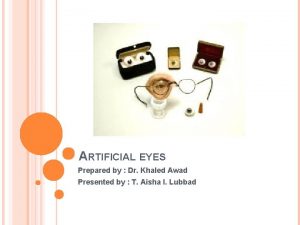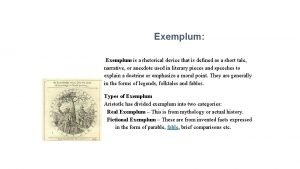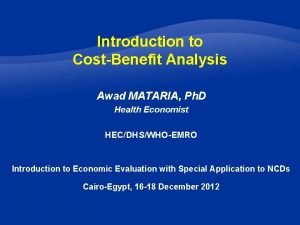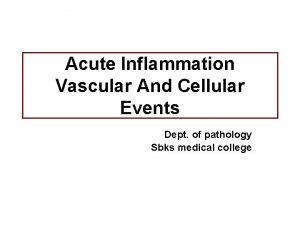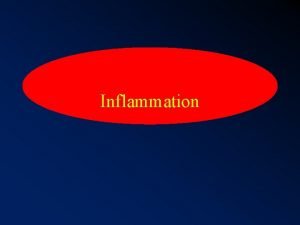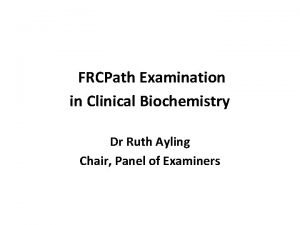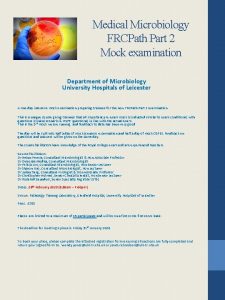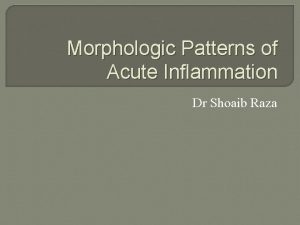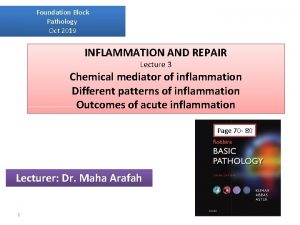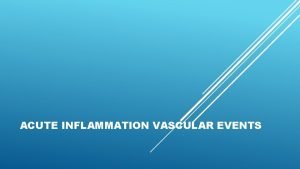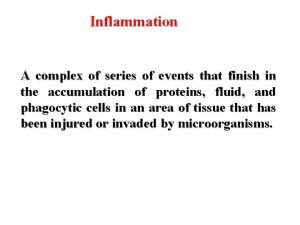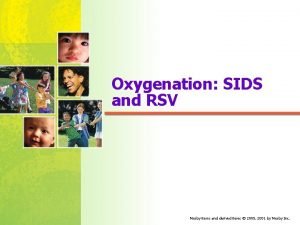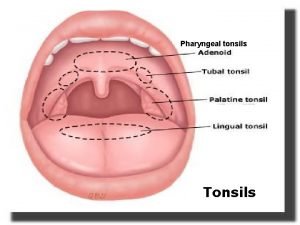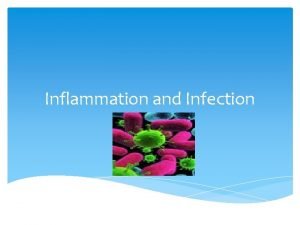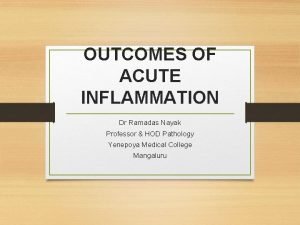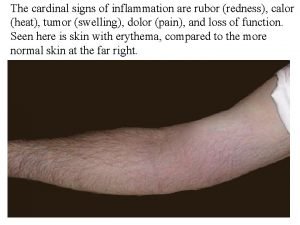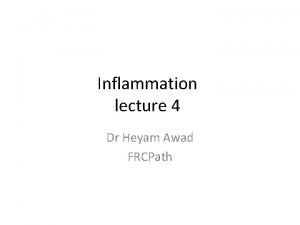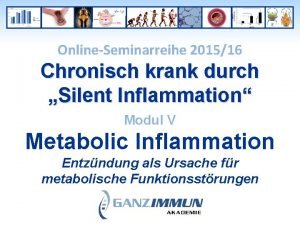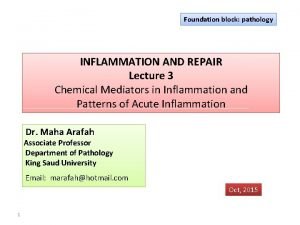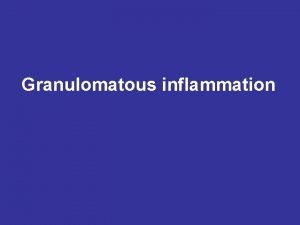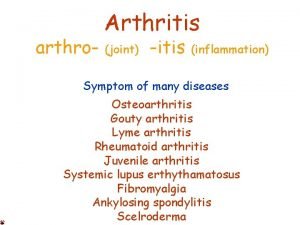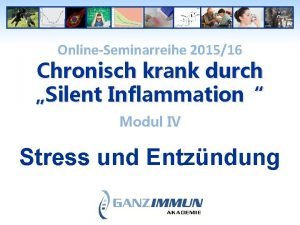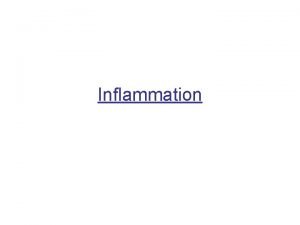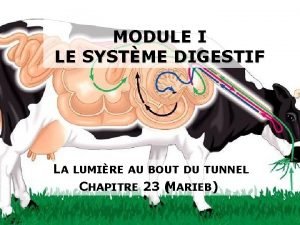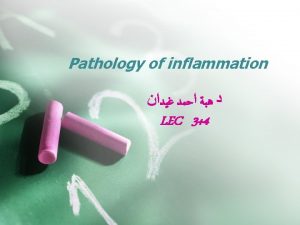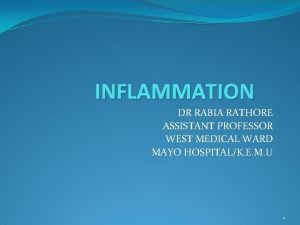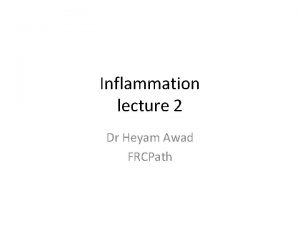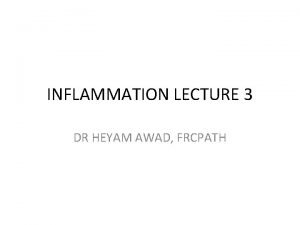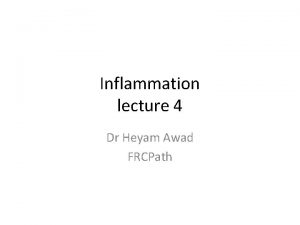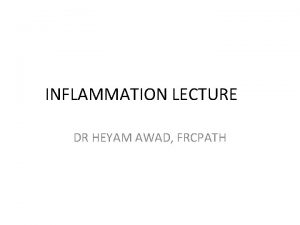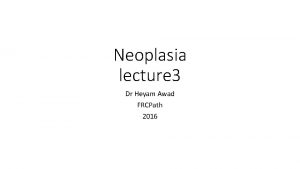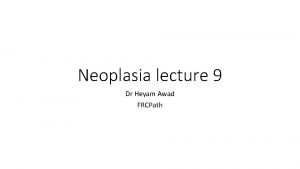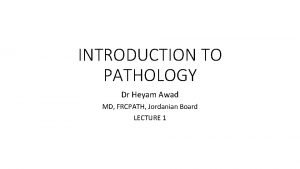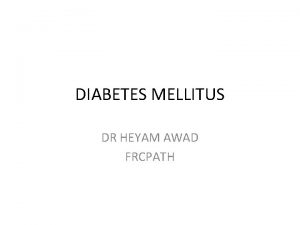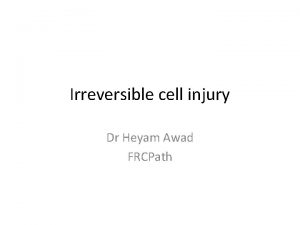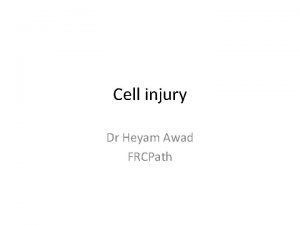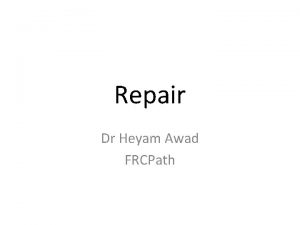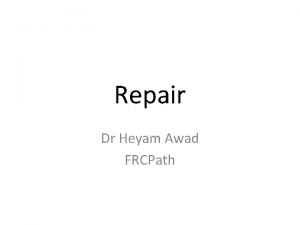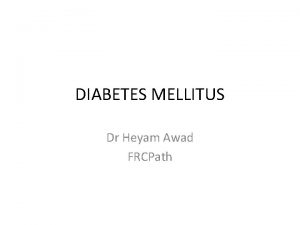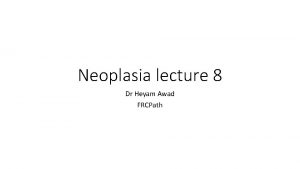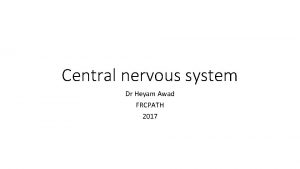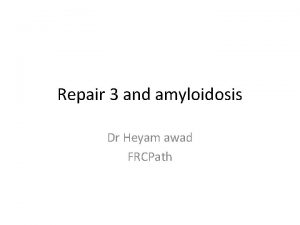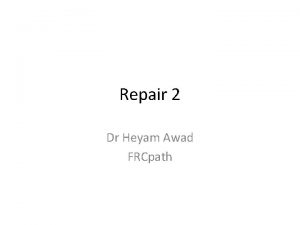Inflammation 3 Dr Heyam Awad FRCPath 2016 Cellular


































- Slides: 34

Inflammation 3 Dr Heyam Awad FRCPath 2016

Cellular events Inflammation needs recruitment and activation of leukocytes. These leukocytes ingest offending agents but also produce mediators capable of tissue destruction

• Leukocytes are inside the blood vessels. . How to get them out? • Message: as a doctor you need critical thinking, splitting things into precise steps and stages

Overview of cellular changes in inflammation • Whiteboard activity.

Leukocyte recruitment • Margination • Rolling • Firm adhesion • Transmigration • Chemotaxis


Margination • Accumulation of WBC at the periphery of the vessel walls. • Due to stasis. • SO it is due to physical stasis NOT to chemical mediators.

Rolling • Endothelial cells activated by cytokines express adhesion molecules to which WBCs adhere loosely • WBCs attach and detach…. Roll • Rolling slows them down • Adhesion molecules responsible : selectin family.

Selectins mo; lecules present on WBCs and endothelial cells. • E selectin… endothelium • P selectin…. Platelets and endothelium • L selectin… leukocytes

• Selectins bind oligosaccharides. • Endothelial selectins present at low levels or not at all on resting endothelial cells. • Cytokines. . Increase expression of selectins. • This overexpression occurs locally at the site of injury.

Firm adhesion • Integrin family of adhesion molecules. • Present on leukocytes and have ligands on endothelial cells. • Integrins expressed normally on plasma membrane on a low affinity form…. Activation by chemokines changes the affinity. • Conformational change and clustering of integrins changes the affinity.

Integrins

Endothelial ligands of integrins • Il 1 and TNF activate endothelial cells to express integrin ligands. • Result: firm stable attachment of leukocytes to endothelial ells.

Transmigration • Leukocytes migrate through vessel walls by squeezing through junctions between endothelial cells. • =Diapedesis. • This occurs in the venules of systemic circulation and capillaries of pulmonary circulation.

• Transmigration is stimulated by chemokines. • PECAM 1 an adhesion molecule expressed on endothelial and leukocytes facilitates diapedesis. • Leukocytes secrete collagenase to pass through basement membrane.

• Transmigration is stimulated by chemokines. • PECAM 1 an adhesion molecule expressed on endothelial and leukocytes facilitates diapedesis. • Leukocytes secrete collagenase to pass through basement membrane.

• Transmigration is stimulated by chemokines. • PECAM 1 an adhesion molecule expressed on endothelial and leukocytes facilitates diapedesis. • Leukocytes secrete collagenase to pass through basement membrane.

chemotaxis • Movement of WBCs to site of injury along a chemical gradient,

chemotaxis

Chemotactic agents • Bacterial products • Cytokines, especially chemokines • Complement components : C 5 a • Products of arachidonic acid : leukotriene B 4

Leukocyte activation • Phagocytosis • Intracellular destruction of phagocytosed microbes and dead cells. • Production of mediators. • Liberation of substances that kill extracellular microbes and dead tissues.


phagocytosis Three steps: • 1. recognition and attachment • 2. engulfment • 3. killing


recognition By cell receptors to • 1. microbial components. • 2. Dead cells. • 3. host proteins = opsonins ( coat microbes and target them for phagocytosis)

Engulfment

Killing and degradation Killing by : Lysosomal enzymes Oxygen free radicals Reactive nitrogen species

Reactive oxygen species • Produced by NADPH oxidase… produces superoxide ion. • Superoxide converted by spontaneous dismutation to Hydrogen peroxide. • Hydrogen peroxide converted to HOCL radical by neutrophil myeloperoxidase. .


Lysosomal enzymes • Acid hydrolases. • Most important: elastase.

NET • Extracellular fibrillar networks produced by neutrophils in response to infections. • Contain nuclear chromatin and enzymes. • Trap and kill infectious agents.

NET

NET

DON’T FORGET THE HOMEWORK
 Dr khaled awad
Dr khaled awad What is an exemplum
What is an exemplum Awad mataria
Awad mataria Cardinal signs of inflammation
Cardinal signs of inflammation Vascular and cellular events of acute inflammation
Vascular and cellular events of acute inflammation Cellular events of inflammation
Cellular events of inflammation Cellular events of acute inflammation
Cellular events of acute inflammation Frcpath clinical biochemistry past papers
Frcpath clinical biochemistry past papers Frcpath eligibility
Frcpath eligibility Frcpath part 1 microbiology
Frcpath part 1 microbiology Morphological patterns of acute inflammation
Morphological patterns of acute inflammation Catarrhal inflammation
Catarrhal inflammation Vascular response in acute inflammation
Vascular response in acute inflammation Morphological patterns of acute inflammation
Morphological patterns of acute inflammation Types of inflammation
Types of inflammation Inflammation
Inflammation Acute inflammation
Acute inflammation Lymphoid tissue in pharynx
Lymphoid tissue in pharynx 5 cardinal signs of inflammation
5 cardinal signs of inflammation Systemic effect of inflammation
Systemic effect of inflammation What are cardinal signs of inflammation
What are cardinal signs of inflammation Phagocytosis definition
Phagocytosis definition Chemical mediators of inflammation
Chemical mediators of inflammation Metaflammation wikipedia
Metaflammation wikipedia Sistema complemento funções
Sistema complemento funções Tromboflibitis
Tromboflibitis Caseating granuloma causes
Caseating granuloma causes Jointitis
Jointitis Inflammation of angle of mouth
Inflammation of angle of mouth Cortisol tagesprofil ganzimmun
Cortisol tagesprofil ganzimmun Cardinal signs of inflammation
Cardinal signs of inflammation Intestin
Intestin Morphological patterns of chronic inflammation
Morphological patterns of chronic inflammation Serous inflammation examples
Serous inflammation examples Dr el sabbagh
Dr el sabbagh
